 |
| January 30, 2018 | Volume 14 Issue 04 |
Designfax weekly eMagazine
Archives
Partners
Manufacturing Center
Product Spotlight
Modern Applications News
Metalworking Ideas For
Today's Job Shops
Tooling and Production
Strategies for large
metalworking plants
NASA begins endurance testing on cruise motors for all-electric X-plane
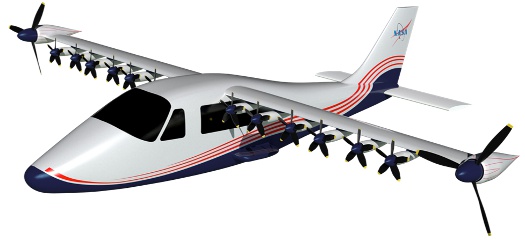
NASA's X-57 Maxwell will be powered by two JM-X57 cruise motors at the wing tips and 12 smaller "high-lift" motors along the wing's leading edge. X-57 aims to demonstrate that electric propulsion can make planes quieter and more efficient, with fewer carbon emissions in flight. [Credits: NASA]
By Matt Kamlet, NASA Armstrong Flight Research Center
The cruise motors that will power NASA's first fully electric X-plane to the skies have begun endurance testing on the ground.
Using a test stand called Airvolt, engineers at NASA's Armstrong Flight Research Center in California are testing the motors and their motor controllers, collecting data to help verify that the experimental electric propulsion system is ready to be deemed flightworthy. If successful, the motors, along with their controllers and propellers, can then be integrated into what will become NASA's first all-electric experimental airplane, or X-plane -- the X-57 Maxwell.
X-57 is a highly modified Tecnam P2006T aircraft that features the replacement of traditional combustion engines and wing with an experimental distributed electric propulsion system. The project aims to demonstrate the potential to achieve high efficiency, reduced carbon emissions, and lower operating costs for aircraft. The X-plane, which will be NASA's first manned experimental airplane in two decades, will undergo several modifications, conducting flight tests with each stage.
Before such an experimental system can be used for flight, however, it needs to undergo extensive testing to validate its safety and functionality in order to be deemed flightworthy according to NASA's flight qualification process.
"We want to confirm that the motor system is as safe as possible before X-57 begins flight testing. The testing is important at this stage because X-57 is a manned test research project, meaning the aircraft will have a pilot onboard," Airvolt Lead Systems Engineer Yohan Lin said. "Previous electric propulsion projects have been conducted using unmanned aircraft, and at a smaller scale, but with a pilot onboard the level of risk is higher."
NASA Armstrong will receive a total of five JM-X57 cruise motors, designed and built by Joby Aviation in Santa Cruz, CA. The team plans to use two of these electric motors in place of the standard Rotax 912 S3 piston engines for the first flight tests of the X-57's first modification, known as Mod II. While additional motors are currently being tested as spares, the idea would be to use the same two motors from Mod II as the primary propulsion system for the aircraft's later modifications, according to X-57 Principal Investigator Sean Clarke.
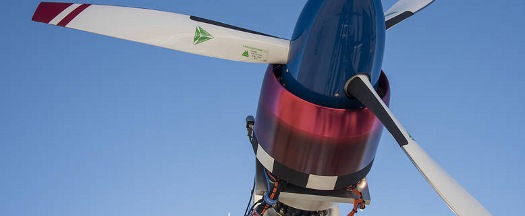
Two main motors are required to fly the plane, but five motors in total will be built and tested. One of the five main test motors will be taken apart after Airvolt testing to have its components inspected as part of a "destructive inspection." [Credits: NASA/Lauren Hughes]
"The two motors that we fly in Mod II, ideally, will be the same two that we take and put on the following Mod III vehicle, which will see the standard Tecnam wing replaced with a thinner, high-aspect ratio wing, and we'll also see the relocation of those cruise motors to the wing tips," explained Clarke. "After that, we'll again evaluate the status of the motors and go with the best option for the wingtip cruise motors for Mod IV, which will add 12 smaller ‘high-lift' motors along the new wing's leading edge."
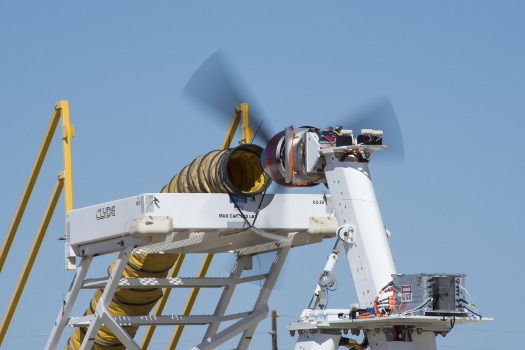
A JM-X57 cruise motor undergoes testing on the Airvolt stand at NASA's Armstrong Flight Research Center in California. The Airvolt stand is instrumented to measure system voltage, current, temperature, vibration, torque, and thrust. [Credits: NASA/Lauren Hughes]
The fifth motor will undergo testing on Airvolt at its full operational capability, and will then be taken apart to have its components inspected as part of what's called a "destructive inspection." The state of the bearings, rotor, and magnets will be observed and analyzed to see how healthy they are. This provides more insight about the motor than can be observed by inspecting the exterior, and NASA researchers will be able to learn more about the motor's performance and safety limits.
Cruise motor tests on Airvolt are designed, in part, to help researchers better understand the power and efficiency of the cruise motors, in addition to making certain that the motor system will stay within safe operating limits during a flight. These tests are conducted using an automated procedure tool called Procedure Integrated Development Environment, or PRIDE, developed for NASA by TracLabs, Inc. in Houston, Texas, as part of the Small Business Innovative Research Program. This tool uses a given test profile and sends commands to the cruise motor controller, which in turn tells the motor how fast to spin.
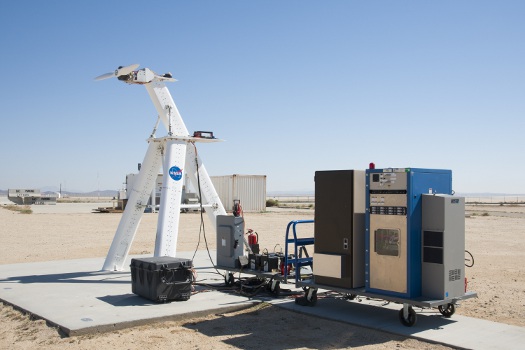
Data obtained from Airvolt testing is used by engineers to analyze how efficient the electric propulsion system is and also whether the motor components are able to operate nominally while remaining within high- and low-temperature limits. [Credits: NASA/Lauren Hughes]
Vibration and thermal analysis are both important elements to the overall motor endurance testing on the X-57 cruise motors. The motor testing includes exposing the motor to various levels of vibration and temperatures. To do this, the motor is exposed to both its nominal and maximum operating temperatures. Engineers will then analyze the motor's ability to remain operational through those conditions.
Data is also being gathered to better understand the torque and thrust produced by the motors. This data is obtained by testing the motor and the motor controller at various power and torque levels and exposing it to various amounts of stress for specific amounts of time.
The Airvolt stand is instrumented to measure system voltage, current, temperature, vibration, torque, and thrust. This data is used by engineers to analyze not only how efficient the electric propulsion system is, but whether the motor components can operate while remaining within high- and low-temperature limits set by the research team.
These elements are critical in one of X-57's primary roles as a pathfinder for electric propulsion: working to identify and establish airworthiness standards for future electric flight.
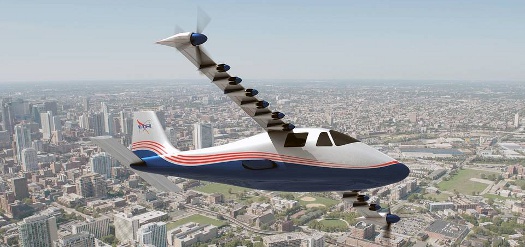
[Image Credit: NASA Langley/Advanced Concepts Lab, AMA, Inc.]
Since distributed electric propulsion is an innovating, experimental technology, no airworthiness standards currently exist for the use of fully electric motors in flight. One of the primary objectives of Airvolt testing, and of future X-57 research flights, is to help the flight certification community including the FAA, the American Society for Testing and Materials, or ASTM, and others identify and establish these standards for the future. The data gathered by these efforts will be provided to the certification community to be used in establishing standards for the future of electric aviation.
For Airvolt testing, this includes providing lessons learned through the evaluation of experimental components and any issues associated with them, such as electromagnetic interference, or EMI. In the case of X-57, engineers are analyzing the effect of EMI on these components and providing multi-dimensional fixes necessary to make them more resilient.
"Learning these lessons now on the ground provides the benefit of preventing potentially costly errors later on in flight," said X-57 Project Manager Tom Rigney. "An important aspect of X-57 is that it is advancing electric propulsion system technologies and acquiring airworthiness test data from Airvolt, other ground testing, and eventually flight testing that will be provided to the certification community to help establish new regulations in the future."
VIDEO: Airvolt testing at NASA's Armstrong Flight Research Center.
The completion of Airvolt testing of the flight cruise motors will mark an essential part of the X-57 project that, if successful, will assure that the motors will meet the requirements that are necessary to keep the manned X-plane operational throughout the entire flight program including Mod II and beyond, according to Rigney.
"Mod II will require the complex integration and flight testing of newly developed, high-electrical energy components that include motors, controllers, and batteries. By putting the motors through a rigorous ground test program using Airvolt, we will be ensured that the motors will work effectively and safely when all the Mod II components are finally integrated and flight tested on X-57," said Rigney.
SIDEBAR: Noteworthy modifications
High-aspect ratio experimental wing
Perhaps the most noticeable difference from the X-57's Modification II configuration will be the development and integration of an experimental, high-aspect ratio wing. Designed by Xperimental of San Luis Obispo, CA, the wing will feature a large reduction in area, with wing loading increasing from 17 lb/ft2 to 45 lb/ft2.
The reduction in wing area will also contribute to more efficient cruise flight through decreasing friction drag. The Modification IV effort will demonstrate that the high-aspect ratio wing with the integrated high-lift motor system will allow the X-57 to take off and land at the same speed as the baseline P2006T; the aircraft will also be less sensitive to gusts and turbulence, leading to a smoother flight.
Relocation of cruise motors to wingtips
One of the most critical, and noticeable, elements of boosting cruise efficiency through electric propulsion is the relocation of the large cruise motors to the tips of the wing. The 100-hp Rotax 912S engines will be replaced by 60-kW motors developed by Joby Aviation, reducing the weight of each motor and propeller from approximately 125 lb to about 57 lb.
The much lighter-weight electric motors allow for their relocation outboard. By moving the cruise motors from their Mod II inboard position to the wingtips, the cruise motors will recover energy that would otherwise be lost in the wingtip vortices.
Nacelles, which are outer casings that can generally act as housing for an aircraft's engine, will also be installed along the leading edge of the wing where 12 high-lift motors will eventually be positioned.
12 leading-edge high-lift motors
The X-57, in its final form of the experiment, is planned to feature 12 high-lift motors along the leading edge of the distributed electric propulsion wing. Similar to the 18 small motors used during ground tests, the high-lift motors would be electrically powered to generate enough lift for X-57 to be able to take off at standard Tecnam P2006T speeds even with the high-aspect ratio experimental wing.
The high-lift motors and propellers would be designed to activate, along with the wingtip cruise motors, to get the X-plane airborne. When the plane levels out for cruise mode, the high-lift motors would then deactivate. The five propeller blades for each motor would then stop rotating and fold into the nacelles, so they don't create unwanted drag during cruise. The two wingtip cruise motors would maintain flight during this phase of the flight.
When the time comes to land, the motors would then reactivate, and centrifugal force would cause the propeller blades to unfold and create the appropriate lift for approach and landing.
Note on batteries: Lithium-ion batteries total wieght 790 lb. 140 kW continuous, 300 kW max.; 461 V nominal. Total run time 69.1 kW-hr (47 kW-hr usable).
Source: NASA
Published January 2018
Rate this article
View our terms of use and privacy policy
